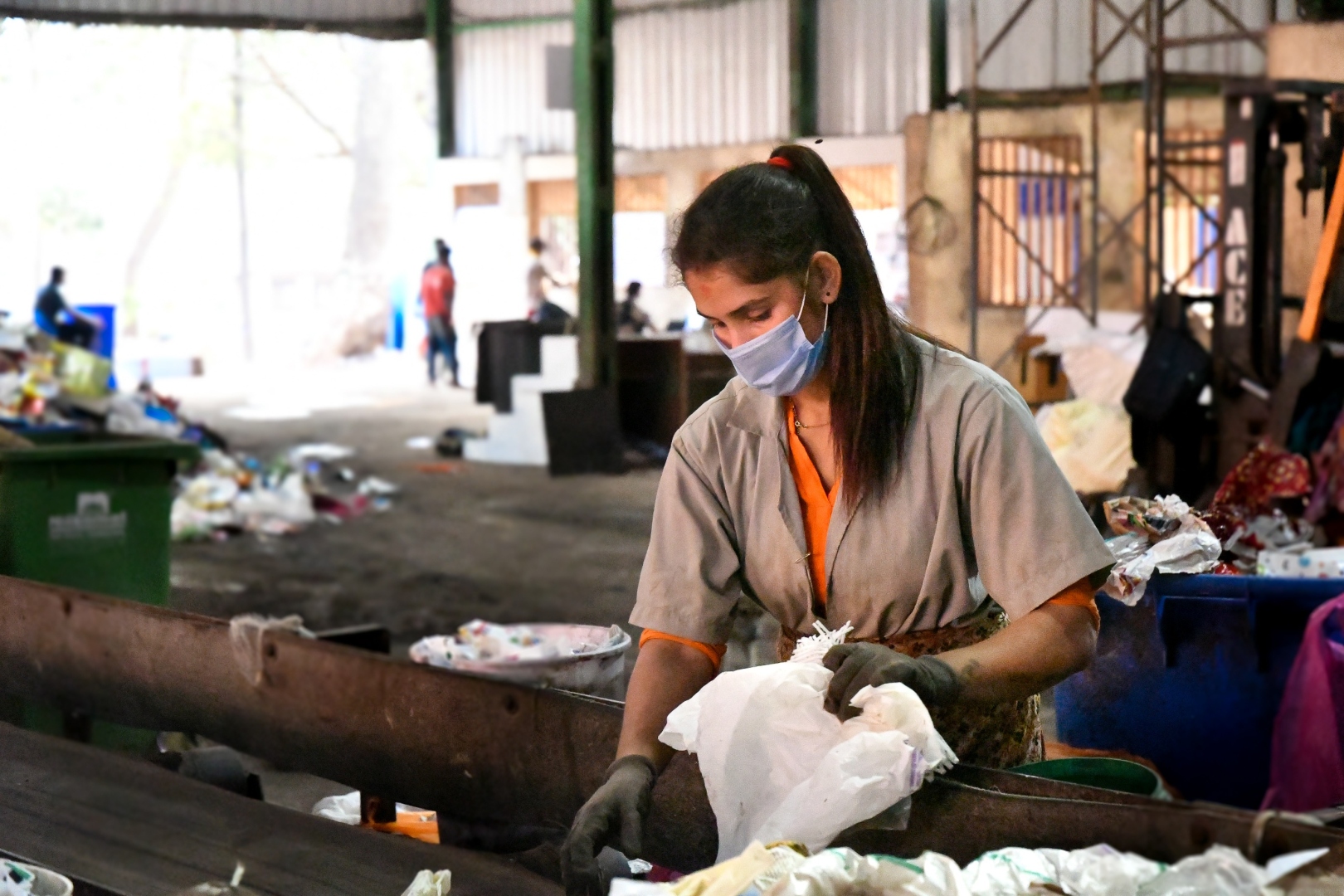
Mixed dry waste is manually segregated by Safai Sathis through a conveyor belt for further processing and recycling at Material Recovery Facility in St Inez.
THE GOAN | PANAJI
Once a severe problem for the capital city's civic body to manage, waste management is now a success story of sorts for the Corporation of the City of Panaji (CCP), inching towards becoming a zero landfill city via its relatively efficient 16-way waste segregation strategy.
The system, according to senior CCP official, Sachin Ambe, segregates dry waste into biodegradable, non-biodegradable, sanitary and hazardous. Besides, it is further broken down into 16 distinct types of waste to improve resource recovery through recycling and sorting processes at the Material Recovery Facility, where it is sorted manually.
"Co-operation from the public, both residents and the hotel and restaurant business owners, is key to the success. A very functional door-to-door waste collection ensures that the households themselves participate in the wet waste, dry waste segregation process," the official said.
Segregation at source
The waste thus collected from across the city is then routed to the dedicated material recovery facility near the KTC bus stand, where the segregation is manually perfected, sorting it out into 16 different categories such as electronic waste, other non-biodegradable waste, plastics, paper, cloth, etc.
The city produces approximately 21 tonnes of waste daily, of which nearly 14 tonnes is wet waste, which is transported to the waste treatment plant facility at Saligao, the official said.
He added that the remaining 40 per cent of the waste is dry, non-biodegradable, which is then segregated through the 16-way segregation process at the material recovery facility.
"The process is now further broken down to segregate 28 fractions from the original 16 started in 2021. What can be recycled is then processed and valuable resources are recovered," Ambe, who now heads the CCP's waste management programme, said.
Swachhta Kendra
The material recovery facility (MRF), also known as Swachhta Kendra, was established in 2014 at St Inez near the Hindu crematorium and is the nerve centre of the city's waste management system. It was part of a nationwide United Nations Development Programme project to strengthen waste management practices in the country.
A kind of factory shed, the place is always full of activity, with over two dozen workers who have been given the 'Safai Sathi' title, constantly working at the segregation process 24x7.
Another batch of sanitation workers the CCP employs work to collect both the dry and wet waste already segregated at the source from all the households in the CCP's jurisdiction. Yet another set of CCP workers is employed to constantly sweep and pick up waste from public spaces littered by the thousands of people who visit the city daily.
While waste management can, for now, be counted as perhaps the only 'feather' in CCP's cap, the fast-paced urbanisation of pockets in Taleigao and also the city's eastern outskirts bordering the villages of Chimbel, St Cruz and Merces means scaling it up will remain key to the civic body sustaining the success.